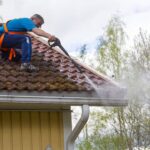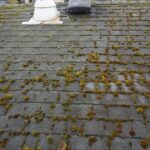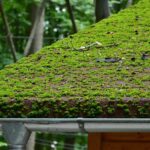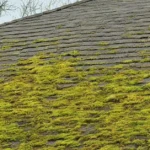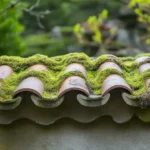When it comes to maintaining the integrity of your home, one of the most essential but often overlooked components is the sloped roof drainage system. These systems play a critical role in preventing water damage, which can lead to costly repairs and potential health hazards. By efficiently directing water away from your home, sloped roof drainage systems help to preserve the structural integrity of your property.
Understanding the fundamentals of these systems is crucial for homeowners looking to protect their investment. In this article, we will explore the various components of sloped roof drainage systems and discuss their importance in ensuring your home’s longevity.

What is a Sloped Roof Drainage System?
A sloped roof drainage system is designed to manage and direct water flow away from the roof and foundation of a building. These systems typically include gutters, downspouts, and other components that work in tandem to prevent water accumulation and subsequent damage.
Components of a Sloped Roof Drainage System
- Gutters: Channels that collect rainwater from the roof’s surface.
- Downspouts: Pipes that direct water from the gutters to the ground.
- Roof Valleys: Intersections where two roof slopes meet, channeling water into the gutters.
- Fascia: The vertical edge of the roof that supports the gutters.
The Importance of Proper Drainage
Proper drainage is vital for preventing water damage to your home’s structure and foundation. Without an efficient system, water can seep into the building’s framework, causing rot, mold, and other structural issues. Additionally, poor drainage can lead to erosion and landscape damage.
For more insights on maintaining your roof, check out Roof Inspection Checklist.
Signs of Poor Drainage
- Water stains on walls or ceilings
- Erosion around the home’s foundation
- Pooling water or ice dams on the roof
- Mold or mildew growth
Types of Sloped Roof Drainage Systems
There are several types of sloped roof drainage systems available, each with its advantages and disadvantages. Choosing the right system depends on factors such as your home’s design, local climate, and budget.
K-Style Gutters
K-style gutters are the most common type used in residential homes. They feature a flat back and bottom, with a decorative front that resembles crown molding. These gutters have a higher capacity for water, making them ideal for areas with heavy rainfall.
Half-Round Gutters
Half-round gutters are a traditional option that offers a classic look. They are easier to clean and less prone to corrosion, making them a popular choice for historic homes.
Installing a Sloped Roof Drainage System
Installation of a sloped roof drainage system should be done by a professional to ensure proper alignment and functionality. Incorrect installation can lead to water pooling and damage.
For DIY enthusiasts, here are some DIY Tips for Downspout Repair.
Professional Installation Steps
- Assessment of the roof’s slope and design
- Selection of appropriate gutter materials
- Installation of gutters and downspouts
- Sealing joints to prevent leaks
Maintenance Tips for Sloped Roof Drainage Systems
Regular maintenance is crucial for ensuring the longevity and performance of your sloped roof drainage system. Neglecting maintenance can lead to clogs, leaks, and other issues.
Regular Cleaning
Clean gutters and downspouts at least twice a year to remove debris such as leaves and twigs. This prevents clogs and ensures proper water flow.
Inspect for Damage
Regularly inspect your drainage system for signs of damage, such as cracks or rust. Address any issues promptly to prevent further damage.
Benefits of Effective Roof Drainage
An effective sloped roof drainage system provides numerous benefits, including:
- Protection of the home’s foundation
- Prevention of mold and mildew growth
- Reduction of soil erosion
- Enhanced curb appeal
Choosing the Right Materials
When selecting materials for your sloped roof drainage system, consider factors such as durability, cost, and aesthetic appeal. Common materials include aluminum, copper, and vinyl.
Aluminum
Aluminum gutters are lightweight, rust-resistant, and affordable, making them a popular choice for many homeowners.
Copper
Copper gutters offer a distinctive look and are highly durable. However, they are more expensive and require professional installation.
Conclusion
In conclusion, a well-maintained sloped roof drainage system is essential for protecting your home from water damage. By understanding the components and maintenance requirements of these systems, homeowners can ensure their property remains in top condition.
For additional information on roof drainage solutions, visit Five Best Drainage Solutions for Flat Roofs.

Frequently Asked Questions
How often should I clean my gutters?
Gutters should be cleaned at least twice a year, preferably in the spring and fall, to prevent clogs and ensure proper water flow.
What are the signs of a clogged gutter?
Signs of a clogged gutter include water overflow, sagging gutters, and water stains on the exterior walls of your home.
Can I install a drainage system myself?
While some DIY enthusiasts may attempt to install a drainage system themselves, it is recommended to hire a professional to ensure proper installation and alignment.
This article contains affiliate links. We may earn a commission at no extra cost to you.




